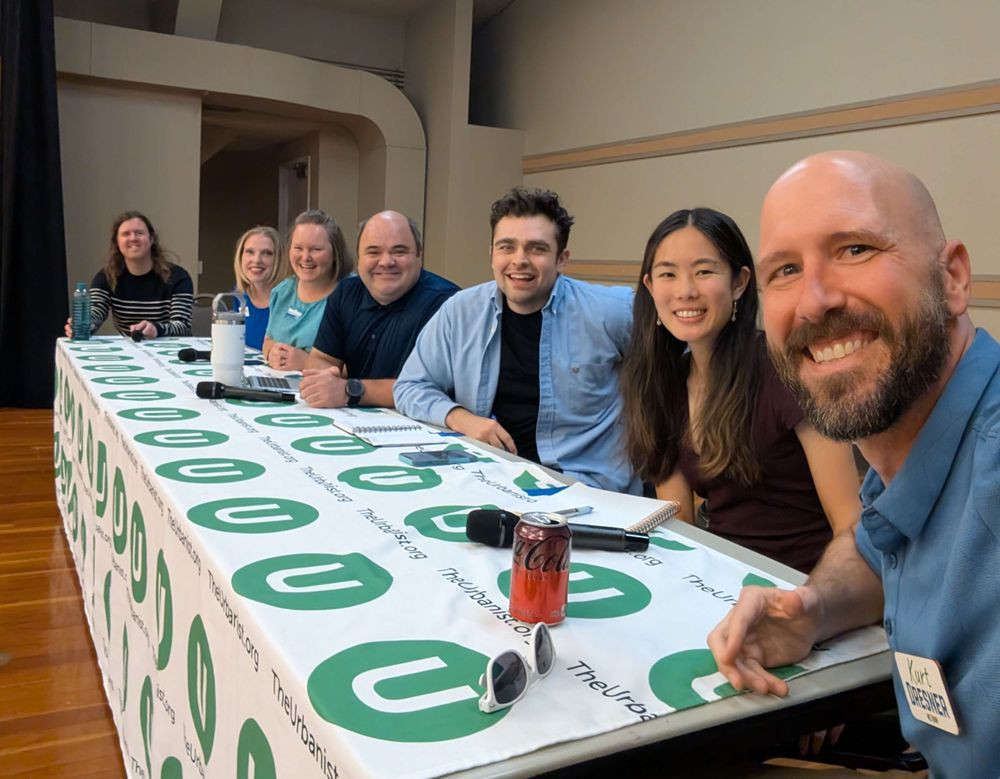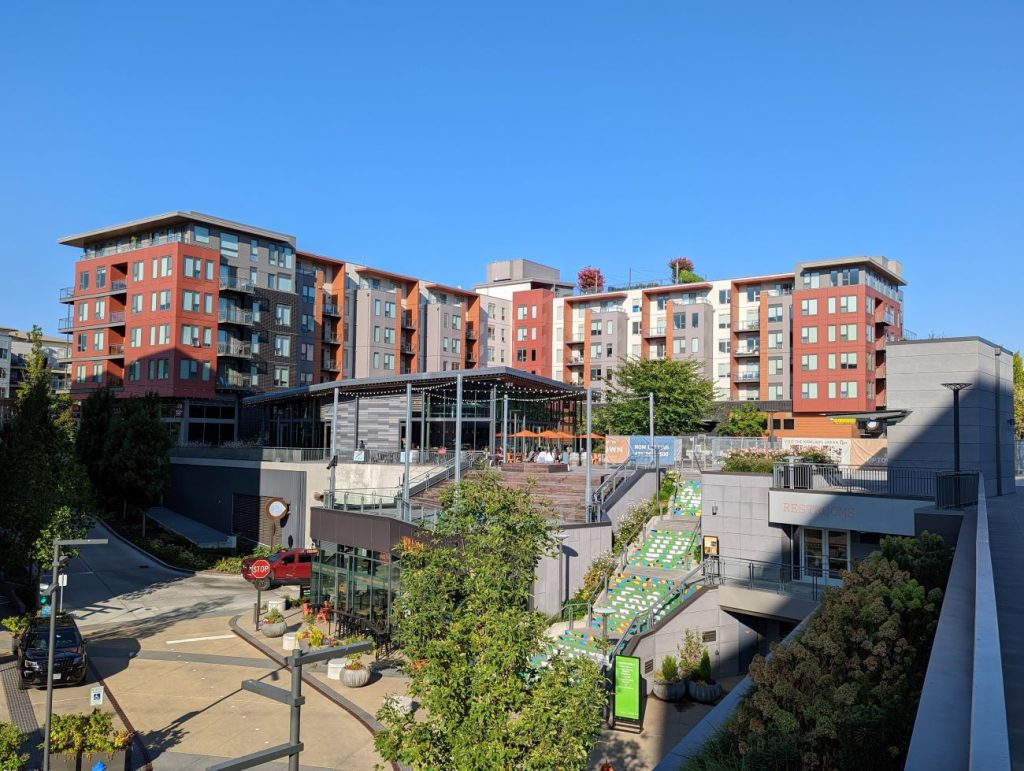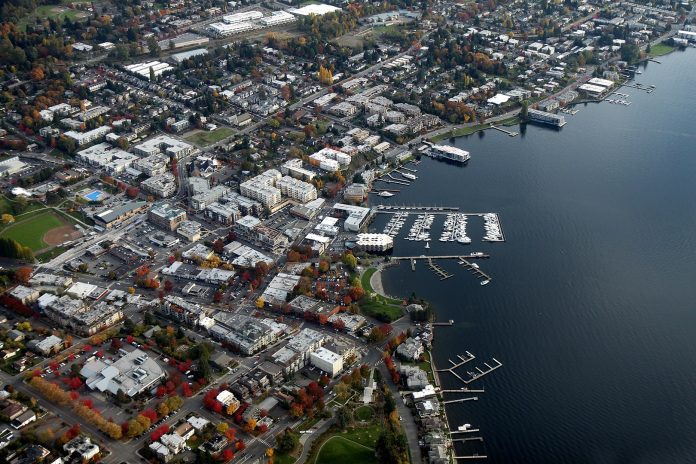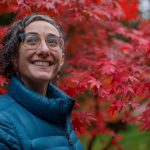Urbanist-minded Kirkland City Council candidates discussed housing solutions at a recent forum — and none of their opponents showed.
On October 8, the Eastside Housing Equity Coalition held a housing forum, allowing candidates running for different positions on the Kirkland City Council to address how they would work to help the city meet its affordable housing goals.
Kirkland, alongside most of Washington, is facing an affordable housing crisis. As of 2022, the area median income of the city, the third-densest in Washington, stands at just over $130,000 — a level developers have mainly only built to, continuing to squeeze out low-to moderate-income families, most of whom are Black families and families of color.
The state deadline to implement recently passed middle housing law pushed municipalities across the state to enact zoning policies that encourage the development of “missing middle” housing, such as accessory dwelling units, mixed-income developments, and cottage housing, in formerly single family zones. Kirkland got a head start, passing middle housing reforms in 2020 ahead of its 2024 Comprehensive Plan update.
Only four candidates showed up to discuss Kirkland’s housing future: Kirkland Deputy Mayor Jay Arnold, incumbent Neal Black (Position 5), Kurt Dresner (running for Pos. 7), and Shilpa Prem (running for Pos. 3). The Urbanist’s elections committee endorsed Dresner and Prem in the primary, and Prem led a crowded primary field, while Dresner, challenging an incumbent, finished second.
Catie Malik (running for Pos. 3) and incumbent Jon Pascal (Pos. 7) were absent. The moderator, Ashwin Rao, noted that they had previously confirmed and then cancelled. Neither Arnold’s nor Black’s opponents — Ken Oberman and Ken MacKenzie, respectively — appeared, either.
Responsive, inclusive communities
Black said that he is a proponent of mixed-income developments—or, as he put it, “more homes at more price points”—and a mix of housing types as a way to ensure Kirkland doesn’t continue on its current trajectory that makes the city largely unaffordable for lower income families. He said that funding such an endeavor is “always going to be a challenge in an economic community like ours that’s situated so favorably economically.”
“We have to invest in a mobility infrastructure that gets people where they want to go and need to go, speedy and reliable, including public transit,” Black said. “And that includes families and individuals who are transit-dependent.”
He also said that councilmembers need to “get out into the community, and … get out as a leader—you have to get out beyond your own neighborhood and just people that are part of your neighborhood.”
“If you’re going to lead the city of Kirkland, you need to be a representative of the entire city of Kirkland and every neighborhood in Kirkland,” Black said. “And it also requires a concerted effort to meet with leaders who represent the people of color and Indigenous communities. And you can’t be a bad friend. Don’t show up only when you’re asking for something.”
Dresner agreed, but also noted that “there are really two sides to complete communities, and the side that [Black] didn’t talk about is the one that makes sure that residents can meet their routine needs without necessarily having to travel to other cities.”
“So what does that have to do with equity?” Dresner continued. “Well, to have those jobs, to have those grocery stores, that medical care, the child care, the schools and stuff, you need to have the people who stock the shelves at that grocery store. You need to have the medical assistants that are taking your blood pressure at your doctor’s appointment and the teachers that are teaching your kids. Those folks need to be able to be a part of your community and have those amenities in there.”

But such development can’t happen without the input of those most affected. Dresner acknowledged that many communities who most need affordable housing options—Black, brown, and Indigenous communities, in particular—can’t always afford to “go down to City Hall on a Tuesday night and wait three hours to speak their three minutes in a public hearing.”
Not only does the dialogue need to be ongoing, he said, it needs to start earlier to ensure the city is getting a representative cross-section of the community. It also needs to meet people where they’re at (literally), and provide a variety of inclusive options that will allow the wider community to participate.
“And last, we need to make sure we’re talking about these issues in ways that people can actually understand,” Dresner said. “You shouldn’t have to be a policy wonk to participate.”
Both Prem and Arnold also agreed with Black and Dresner, regarding the need for more varied housing. Arnold added that the city is working to develop the city and its communities at scale, especially in transit corridors.
“Our vision for the 85th Street Station area is for housing and jobs near bus rapid transit that’s going to be coming on the 405. We need to turn that into the next version of Totem Lake,” Arnold said. “At a smaller scale, our neighborhood shopping centers are an important element. Many of these are ‘80s-era strip malls that are ripe for redevelopment, where we can add housing, make them mixed use, and protect neighborhood grocery stores with transportation and transit.”
Prem said that she felt she had a good personality to build rapport with the wider community, and said that the city should hold listening sessions specifically for Black, brown, and Indigenous communities to ensure that these communities are not excluded. She also said that many people don’t really know what the city council does, and that she would want to attend different organizational meetings to meet community members.
Arnold said that the city’s historical outreach methods haven’t fully captured input from all the city’s residents.
“That’s why City Council directed staff to broaden our outreach and specifically mention Black people and people of color,” Arnold said. “This happens through tactics like focus groups, specific outreach, and participation in programs. … It is a challenge to reach people where they are, especially without local journalism.”
Displacement and affordable housing revenue sources
Prem said there are two sides to displacement: renters and buyers.
For renters, she said, displacement happens when wages don’t rise as quickly as rent. While the state legislature recently passed a law capping rent increases at 10% (or less) per year, this doesn’t necessarily mean that more people are being and remaining housed because of that cap, she said. She also wanted to ensure the law doesn’t stifle development of affordable homes.
As for homebuyers, particularly for first-time homebuyers or those who want to age in place, she said, the challenge is access: Rising home prices combined with limited inventory means that many are pushed out of communities.
“To address this, I support deferring on property taxes for some homes […] and zoning reform to allow more townhouses and condos and transit jobs,” she said.
She said that the city needs to take a close look at strengthening its partnership with and investment in A Regional Coalition for Housing (ARCH), and assess whether the contributions are adequate. She also said that the city needs to incentivize builders by reducing fees for builders looking to create affordable housing, and ensure that inclusionary zoning requirements are consistent and clear. Finally, she said, the city should continue to partner with for-profit companies, like Amazon, as well as non-profit organizations to create affordable housing.
Arnold argued that the issue started with supply, which is why the Kirkland City Council had specific targets for housing that met different income levels. Most of the housing for teachers, healthcare workers, retail workers, and restaurant workers was going to be apartments, he said. He also said that the city needed to incentivize developers to create smaller homes to allow people the opportunity to stay in Kirkland.

The progress the city is making is happening regionally, Arnold said, and through partnerships with companies like Amazon and Microsoft. Arnold believes that any new revenue should avoid regressive property and sales taxes, but that one option the city supports is an incremental increase in real estate sales. Arnold personally thinks this should be on larger homes, and that the tax should progressively get higher with houses that reach into the “expensive megahouse” range.
Arnold contended that the state should share revenue from progressive tax sources, like the capital gains tax, with municipalities.
Black said he saw the question through a socioeconomic lens, and that a complete community strategy includes subsidies for housing and a regional coalition for housing efforts. He agreed with much of what Arnold said regarding funding affordable housing initiatives, including the incremental tax increases on real estate sales. However, Black said that he believes “it’s a little bit of the wrong way to look at it as what local sources of revenue we can use to subsidize affordable housing.”
“I think we need to look at our tax structure as a whole and make sure it’s serving us all as a community and that it reflects our values as a people and that it’s fair and reasonable and predictable and sustainable,” Black said. “If we were to do that, we would have fungible funds within our general fund to do some of the housing work. So, I’m not necessarily focused on new sources of local revenue for this work. I’m looking to work on a more fair and equitable tax system across the board.”
Dresner said that he opposed any development that required renter displacement.
“In the cases where we do have to redevelop something that’s going to displace renters, we should do it the way that the King County Housing Authority is doing it with the Kirkland Heights project where they are doing it incrementally, bit by bit, so that we displace the fewest amount of people,” Dresner said. “Replace one building, move everybody into that building, then replace another building instead of just getting everyone and doing one big construction project.”
He also said that the city should require transparency in voluntary tenant buy-out processes: ”That’s another one where people get taken for a ride and wind up giving up their affordable living situation,” Dresner said.
“We should be prioritizing displaced tenants for affordable housing placement,” Dresner continued. “And we should be adding more multifamily housing in our neighborhood centers because it doesn’t just allow more folks to live in our neighborhoods, it also puts them closer to the services they need, which can reduce their reliance on driving or further saving them money.”
He pointed out that, historically, Kirkland’s inclusionary zoning requirement only applied to multifamily housing, which makes this kind of housing—often the cheapest—more expensive. The Kirkland City Council’s recent decision to close the so-called “McMansion Loophole” meant that developers looking to build large, single-family homes now have to “play by the same rules” as those looking to build more affordable, multifamily homes, Dresner said. In addition to leveling the playing field, he said, this is also projected to generate more revenue for affordable housing than any other city program.
Dresner noted that his absent opponent, Pascal, was the only city councilmember to vote against the measure.
Dresner expressed interest in standing up a transferable development rights program. This is not a new source of revenue, but allows a property owner who does not want to add development to an existing piece of property to sell the development rights to another property owner on whose property the development may fit better, or it is more advantageous to build there.
“This also can allow us to prevent displacement and preserve more of our natural affordable housing and also our urban forests,” Dresner said.
Navigating negative public opinion
In the course of asking the candidates about supportive housing, Rao noted that there was “strong public opinion against new revenue and the use of funds for low-income housing or homelessness responses.” He asked candidates how they would handle the push against allocating money for housing to address these issues, as well as what their top two funding priorities are.
Black said that he would look to where he could find shared values on the topic, so that the city could spend money now to avoid spending a significant chunk of money in the future. He said that his top funding priorities lie with two very specific initiatives: the possibility of Kirkland funding a circulator bus and “year-round all-weather aquatics at the Peter Kirk Pool program provided by the city for residents of all ages and at every income level.”
Dresner put addressing low-income housing and homelessness response funding reluctance in stronger terms: “In a lot of ways we’ve historically been a little penny-wise, pound foolish on this.” He said that his top two funding priorities are encouraging affordable housing development alongside ensuring safe and efficient transportation infrastructure.
“Making those investments up front, it pays dividends,” Dresner said. “And so when I hear people say, ‘Oh, we can’t do that because we can’t afford it’—we can’t afford not to do it. We’re going to be paying it on the other end when we’re paying for emergency room visits and dispatching police and putting people in jails or hospitals. All of those things are way more expensive.”
Prem said that she planned to have face-to-face conversations with people, where they could share with her their concerns—“and, at the same time, I’ll lead with facts. Supportive housing has proven, just like what [Dresner] was saying, to not just be the compassionate thing to do, but it makes financial sense.”
“King County did a study where permanent housing was implemented, and the ER visits went down by 17%,” she said, referring to the County’s Health Through Housing (HTH) initiative. “The hospital stays went down by 23%. So those are tax dollars saved, and there’s hard data to prove it.”
Along those lines, Prem backed s housing and human services as her top two funding priority. She also listed a focus on funding capital improvement projects, such as roads and transportation infrastructure.
Arnold took the opportunity to call out the opponents—his included—who did not show that night.
“They had time to do their homework and be prepared to talk about their positions. That’s the job every Tuesday council meeting,” he said.
He also touched on voters’ support for programs like Best Starts for Kids, but did not specifically mention how he would navigate conversations with people opposed to funding low-income housing and homelessness response.
Budget-wise, Arnold said that he also supports capital improvements in transportation, but is most concerned with tackling the fallout from decisions at the federal level.
“Cuts there are going to impact our human service providers, public safety, our mobile health teams, crisis responders,” he said. “I want to protect that good work we are doing and then do what we can to help the most vulnerable.”
Local actions to combat federal cuts
Arnold said that, in order for permanent, supportive housing to be successful, it needs to include sustainably funded services that don’t get the axe, due to federal government funding cuts. But local actions alone “won’t be able to fill in the Medicaid cuts, not to mention the additional need for [permanent supportive housing].”
“That’s what makes new city-funded assistance programs complicated,” he explained. “We’re going to do band-aids on what we can, but cuts at the scale of Medicaid will only be addressed by action at the state level or changes at the federal level. So the priority really is going to be to finish the work that we’ve done before we do other things, given the turmoil that’s happening at the federal level.”
Black agreed, saying that the city will need to continue to have “a strong continuum of care to act as a safety net when there’s risk of people in our community falling through it.” This continuum of care, he said, includes everything from the city’s homelessness outreach team to its hotel voucher program and inclusionary zoning.
Dresner said that the city needs to be smart about investing, and work to save money in the long run.
“And when Jay said it competes with public safety funding, it really does—because if we don’t do this, then we’re going to have to do more public safety funding to make up for our failures in that area,” Dresner said. “I think it’s a good investment to be taking care of folks and getting folks off the street. It’s very expensive to have people on the street. … The bottom line is we need more affordable housing, as well.”
Prem said again that she believed the city needs to strengthen its partnership in ARCH, and incentivize builders, as well as explore development partnerships.
Equitable access to parks, schools, and jobs
Black said that there are three specific things he believes the city needs to continue to do to ensure equitable access to parks, schools, and places of work. He said that the city must continue to create middle housing; pursue public space development agreements on major projects; and charge developers park impact fees so that new development helps to pay for new parks.
Dresner said that he supported policies that allow for a wide variety of housing options so that people can find what works for them, as well as changes to the building code that allows the city to build space-efficient—but still well-oriented and livable—structures. These kinds of buildings would allow people to live near schools and parks. Part of this would also involve modernizing the building code, he said, including things like single-stair building reform.
Single-stair reform policies allow construction of new residential buildings with just one exit stairway, instead of the usually mandated two-stairway exit plans that limit construction and drive up costs.
Prem said that she supported mixed-use zoning to allow more people like teachers to live in the city where they work, and that new development should be transit-oriented.
Arnold agreed, stating that housing with access to parks and transit was crucial, as is removing barriers to creating transit-oriented development. This includes inclusionary zoning, he said.
“We need to go from allowing things to incentivizing things, so that we’re incentivizing more of the smaller homes that we’ve talked about,” he said. “Overall, Kirkland’s got a goal for not just parks within walking distance of every Kirtland resident, but also want to invest in areas that are underserved, like the northeast part of Kirkland.”
Trade-offs
Rao quoted economist Thomas Sowell—“There are no solutions. There are only trade-offs”—as a lead-in to the question of how the candidates would handle the trade-offs necessary to translate ideas into action.
“Speaking economist,” Dresner said, “there’s really only two ways to make something less expensive. You can either make more of it, or you can make people want it less.”
But when it comes to housing, there is no way to make people want it less, he said. Shelter is a basic need. Dresner spoke against making trade-offs, stating that, “in general, in our neighborhood commercial centers, our urban growth centers, there’s plenty of opportunities there that don’t involve those tradeoffs, and then there are also ways to add more housing throughout our neighborhoods.”
“Like I said,” he continued, “We update our building code, We update our land use policies that can be done in ways that actually enhance the character of our neighborhoods.”
Prem agreed, and said that balancing affordability and supply with neighborhood character requires transparency and listening to communities.
“This will mean careful consideration of design, scale, location for new development without prospecting to lengthen the progression of options for housing,” Prem said. “Livability and affordability do go hand in hand.”
Arnold appeared to suggest that something someone might view as a trade-off—for instance, living in a mixed-use building—is actually “complementary to preserving those favorite local businesses and our grocery stores. They make the neighborhood stronger and more vibrant.”
“The whole point of middle housing is it integrates well,” Arnold said. “I’ve been on middle housing tours where I didn’t even know something was a duplex if it hadn’t been on the tour. Often it gets feedback in the form of vote no. My approach is to listen to all voices and find out what that core is of the vote no sentiment—See if I can make changes and address concerns that aren’t a given ‘yes.’”
Black said that he looks beyond the trade-offs and towards “the next level, to the actual opportunities with vision and with some thoughtfulness. Because a lot of the issues we face in government, they do look initially like really tough trade-offs.”
“But the best people in our community, the best people in these seats are the ones who can appreciate that there might be trade-offs, but see the opportunity,” Black said. “You’ve heard that from some of my colleagues. I think we can have sufficient homes and a greater mix of housing types, including a mix of smaller, more affordable homes, while maintaining our quality of life, while strengthening our community, if we do it through thoughtful planning. And that includes concurrent investments in improved infrastructure, and that includes multimodal mobility. It includes open spaces and parks, and it includes school capacity.”


